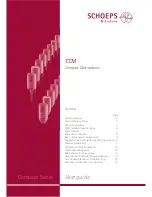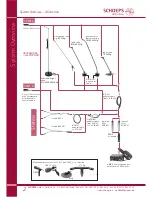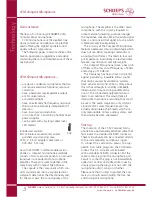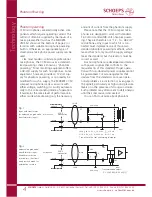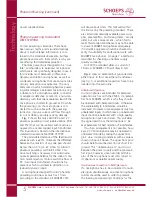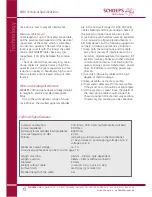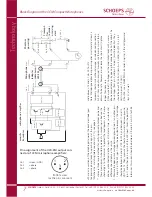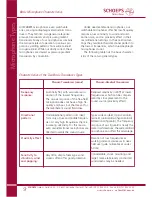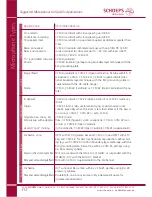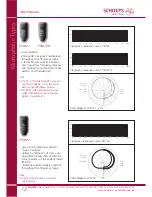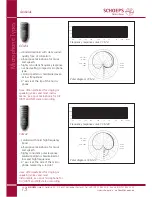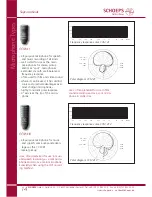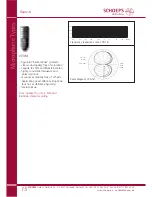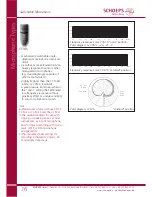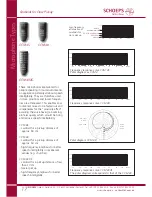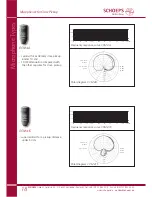
SCHOEPS
GmbH · Spitalstr. 20 · D-76227 Karlsruhe (Durlach) · Tel: +49 (0)721 943 20-0 · Fax: +49 (0)721 943 2050
www.schoeps.de · [email protected]
Phantom Powering
4
Technology
Phantom powering
CCM microphones are electrically active com-
ponents which require operating current. This
will most often be supplied by the inputs of a
mixer, preamplifier (such as the
SCHOEPS
VMS 5U shown at the bottom of page 2) or
recorder with suitable microphone powering
built in. Otherwise, an appropriate type of
stand-alone microphone power supply can be
used.
Like most modern, solid-state professional
microphones, the CCM also uses a standard-
ized powering scheme known as “phantom
powering.” Most recording equipment offers
a 48-Volt supply for such microphones. Some
equipment, however, provides a 12-Volt sup-
ply for phantom powering, or can readily be
modified for such a supply. The
SCHOEPS
CCM
compact microphones series can work with
either voltage, switching its circuitry automati-
cally to the corresponding mode of operation.
It maintains the same level of performance in
either mode while drawing only the necessary
amount of current from the phantom supply.
Please note that the CCM compact micro-
phones are designed to work with standard
12-Volt or standard 48-Volt phantom power-
ing. They are therefore not ”12 - to - 48 Volt”
microphones. Any input to which it is con-
nected must implement one of those two
standard phantom powering methods, which
means that not only must the supply voltage
meet the standard, but the resistors must be
correct as well.
Our microphones are developed and tested
with power supplies that conform to the
require ments of this standard. Proper opera-
tion with non-standard power supplies cannot
be guaranteed. Circuit arrangements that
deviate from the standard can cause opera-
tional problems (i.e. distortion or even gaps in
the signal), particularly at high sound pressure
levels or in the presence of strong wind noise.
Such problems may often seem to defy analysis
until their real cause is discovered.
You can find out more about phantom
+ phase
- phase
2 (4)
3 (5)
microphone
1
screen
cable
powering
R
S
U
S
input
R
S
P48: U
S
=
48 V ± 4 V; R
S
= 6,8 k
W
*,
I
max.
= 10 mA
P12: U
S
=
12V ± 1V; R
S
= 680
W
*,
I
max.
= 15 mA
I
/2
I
/2
I
+ phase
- phase
2 (4)
3 (5)
microphone
1
screen
cable
powering
R
S
U
S
input
R
S
R
R
C
C
*
see note in the text concerning tolerances
Fig. 2
balanced, ungrounded,
transformerless input.
Condensers must be
inserted into the circuit
and provision made for
polarization resistors.
*
*
*
Fig. 1
input with transformer
(or balanced, ungrounded
transformerless input)
XLR-3
connector
XLR-3
connector
*
recommended values:
C: 100
μ
F, 63V; R: 22k
Ω
, 1%
shield
shield

